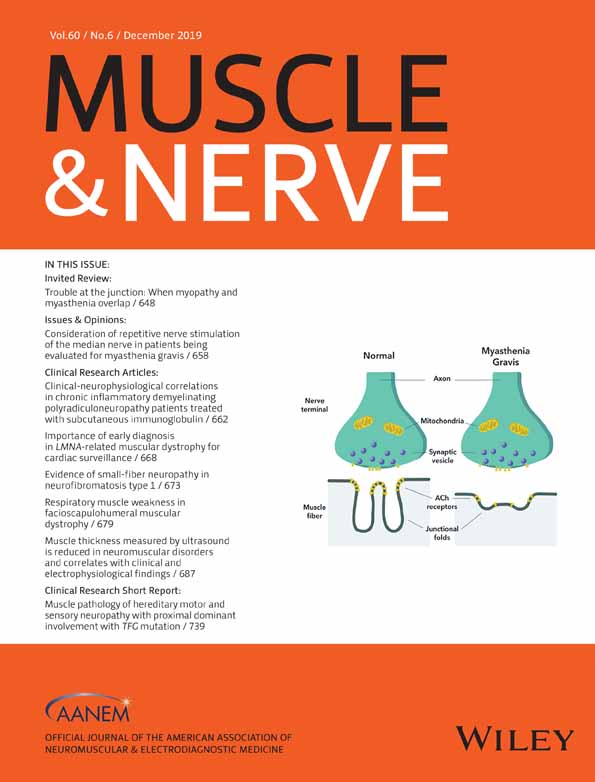Altered muscle electrical tissue properties in a mouse model of premature aging
Funding information: Beth Israel Deaconess Medical Center, Grant/Award Number: Neurology Pilot Grant; National Institutes of Health, Grant/Award Numbers: R01 NS091159, R21 NS094840
Abstract
Introduction
Improved methods are needed to detect and quantify age-related muscle change. In this study we assessed the electrical properties of muscle impacted by acquired mitochondrial DNA mutations via the PolG mouse, which exhibits typical age-associated features, and the impact of a potential therapy, nicotinamide mononucleotide (NMN).
Methods
The gastrocnemii of 24 PolG and 30 wild-type (WT) mice (8 PolG and 17 WT treated with NMN) were studied in an electrical impedance-measuring cell. Conductivity and relative permittivity were determined from the impedance data. Myofiber cross-sectional area (CSA) was quantified histologically.
Results
Untreated PolG mice demonstrated alterations in several impedance features, including 50-kHz relative permittivity and center frequency. A potential effect of NMN was also observed in these parameters in PolG but not WT animals. Impedance values correlated with myofiber CSA.
Discussion
Electrical impedance is sensitive to myofiber features considered characteristic of aging and to the impact of a potential therapy.
CONFLICT OF INTEREST
S.B.R. has equity in, and serves a consultant and scientific advisor to, Myolex, Inc, a company that designs impedance devices for clinical and research use; he is also a member of the company's board of directors. The company also has an option to license patented impedance technology of which S.B.R. is named as an inventor. B.S. also serves as a consultant to Myolex, as well as to Impedimed, Inc, another company that develops impedance technology for clinical use.




